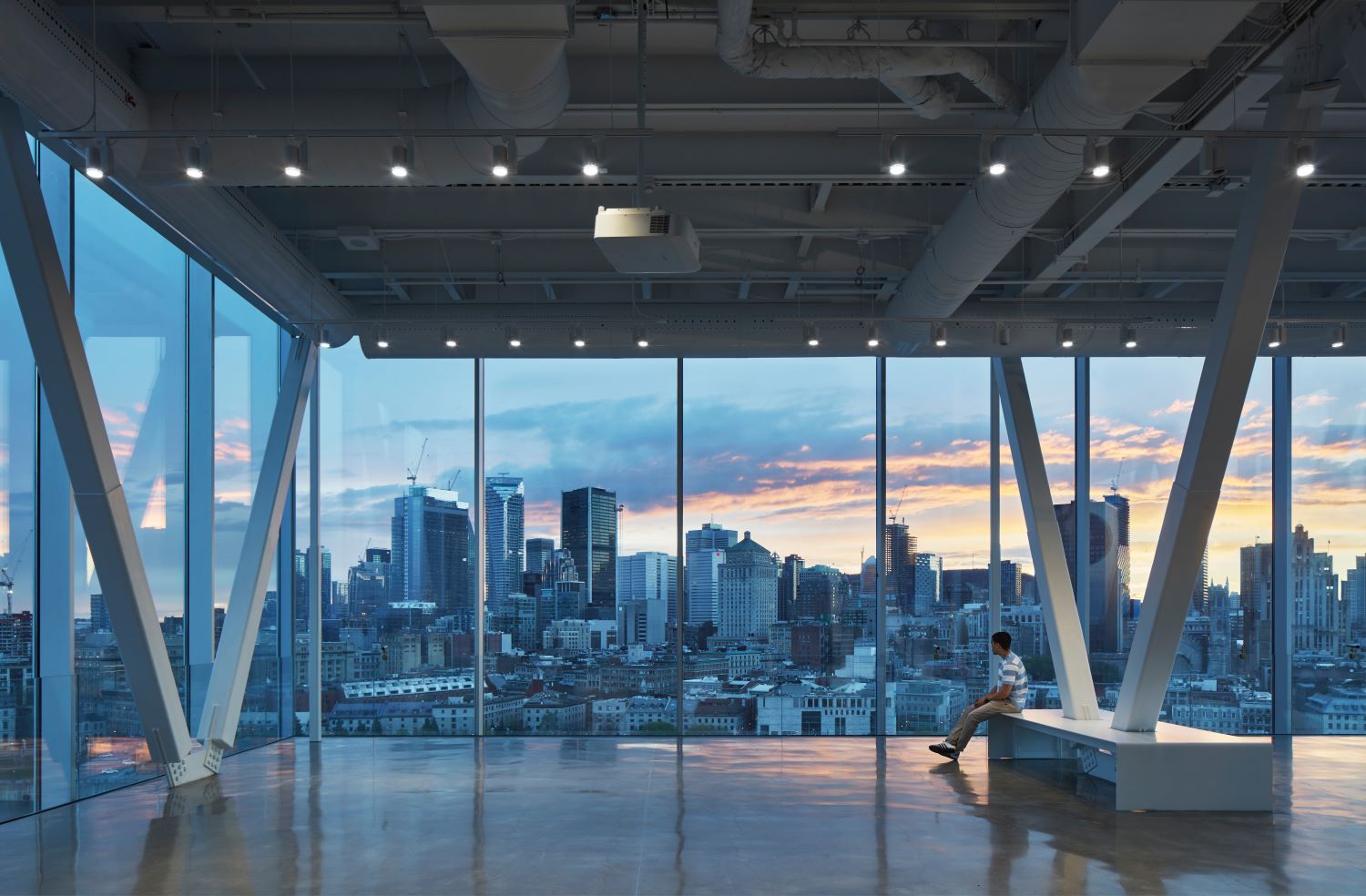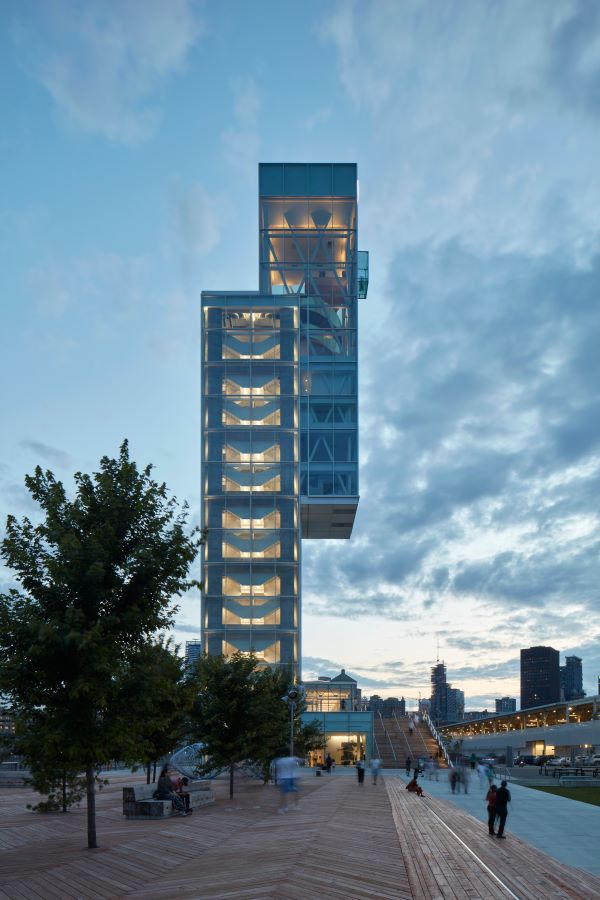
Nominating company: Agnora
Location: Port of Montréal, Québec, CanadaWinning Team
- Glass fabricator: Agnora
- Glazing contractor: Flynn Canada / Vitreco
- Glass manufacturers: Saint-Gobain North America; Pilkington North America
- Interlayer supplier: Kuraray
- Window manufacturer: Vitreco
- Window installer: Flynn Canada
- Architect: ProvencherRoy
- Consultant: Arup / Elema / Bethanie Cloutier
- Structural engineering services: Elema
 The Port of Montréal Tower makes spectacular use of jumbo glass for the best reason: panoramic views. The all-glass tower and cultural center allows visitors to see 360-degree views of surrounding Montréal and the St. Lawrence River in Québec, Canada. In all, fabricator Agnora supplied over 400,000 square feet of glass for the exterior, all jumbo in size.
The Port of Montréal Tower makes spectacular use of jumbo glass for the best reason: panoramic views. The all-glass tower and cultural center allows visitors to see 360-degree views of surrounding Montréal and the St. Lawrence River in Québec, Canada. In all, fabricator Agnora supplied over 400,000 square feet of glass for the exterior, all jumbo in size.
At the top of the over 200-foot tower is a visitor space, an all-glass room where visitors can sightsee. The glass “box” provided an opportunity for innovation for project players and Agnora. Unlike traditional walkable glass structures that cantilever over the edge of a building, L’Experience is entirely glass and has no metal supports.
The four-ply floor also differs from traditional glass floors in that systems were insulating glass units, not laminated glass. Part of this was due to the climate—depending on the environment in which they are installed, laminated floors that are not IGUs can risk condensation and even freezing surfaces, says Agnora’s Adam Mitchell, marketing manager.
“The design and engineering to create the cantilevered façade is impressive,” says Glass Magazine Awards judge Alan Kinder, director commercial segment, Guardian Glass. “Even more impressive is the entire glass structure is self-supporting, highlighting that glass is an amazingly strong building material with a light and open aesthetic.”
The jumbo structures on the tower are comprised of an outboard lite of Saint-Gobain’s Cool-lite XTREME 70/33 on Diamant, with NSG Pilkington’s heat-strengthened Optiwhite on the interior to match the low-iron qualities of the diamond, says Mitchell. The configuration provided an optimal blend of visible light, a low solar heat gain, and a winter U-value of 0.24, he says.





